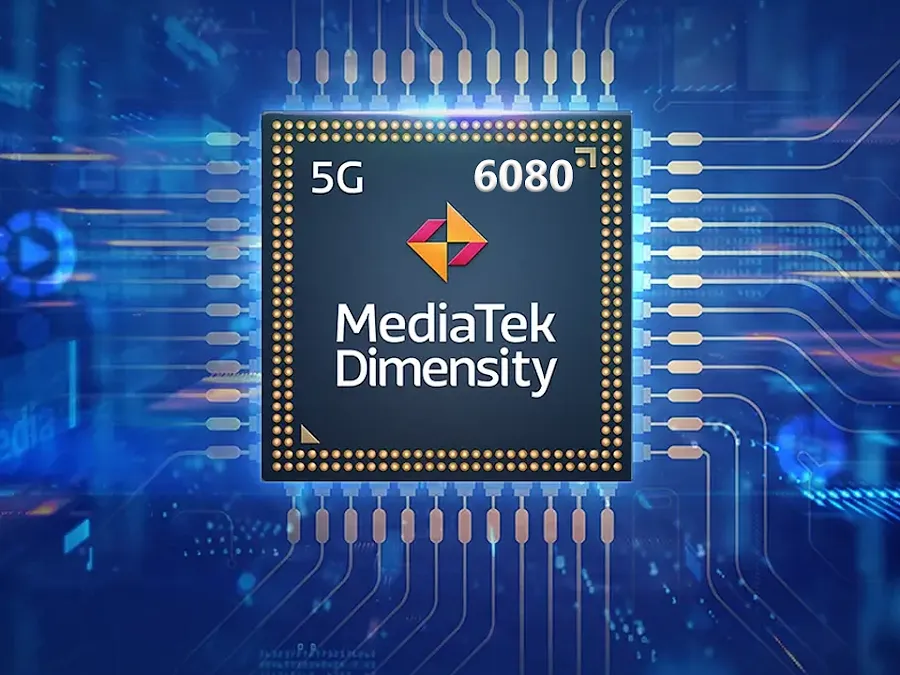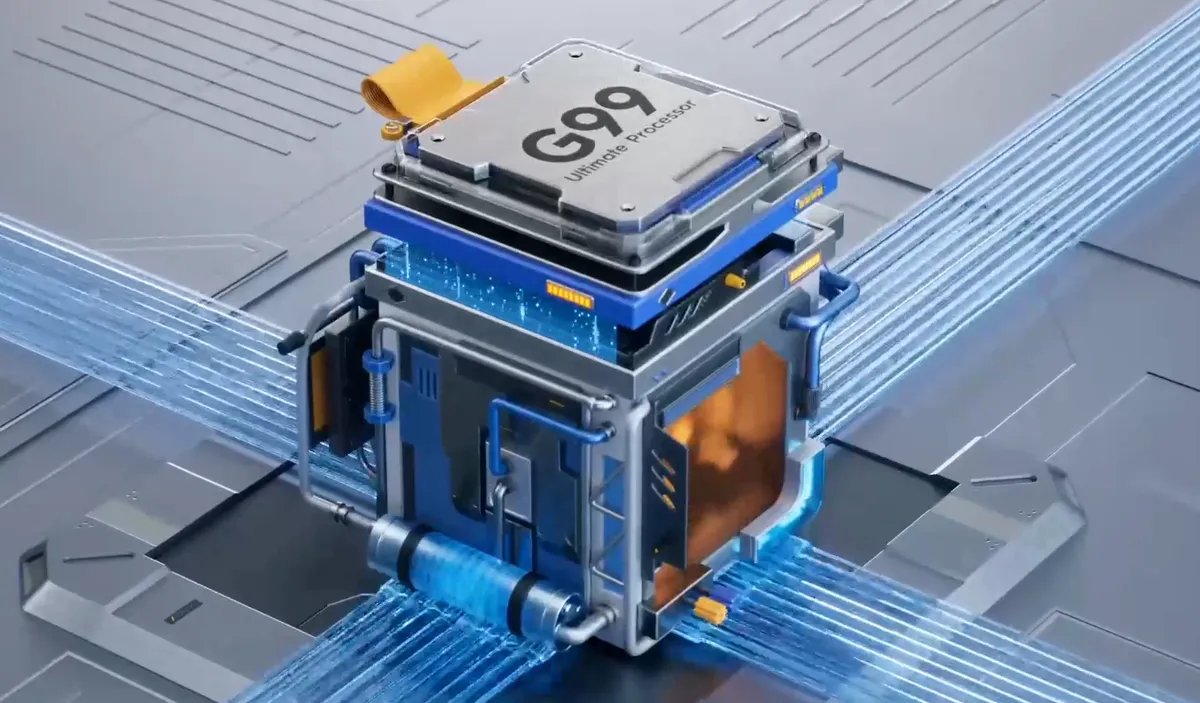MediaTek Dimensity 6080 vs Helio G99: A Comparison
MediaTek is one of the most prolific makers of mid-range smartphone chipsets. People choose its processors because they deliver strong performance while keeping power use low.
Two of their best-known chips are the Dimensity 6080 and Helio G99. You’ll find both in many affordable to mid-range phones, since they strike a good balance between price, speed, and battery life.
Even though they come from the same company and target a similar class of devices, a few key technical differences set them apart. Let’s take a closer look.
CPU and GPU Architecture

The Dimensity 6080 and Helio G99 both use an octa-core layout with a 2+6 setup: two high-power Cortex-A76 cores plus six energy-saving Cortex-A55 cores, all built on ARM’s v8.2-A design.
Where they differ is clock speed. The Dimensity 6080 pushes its Cortex-A76 cores to 2.4 GHz, while the Helio G99 caps out at 2.2 GHz. That extra 200 MHz gives the Dimensity a slight lead in raw processing power, even though the overall design remains similar.
On the graphics side, both rely on the ARM Mali-G57 MC2 GPU using the first-generation Valhall architecture. This means their basic graphics chops are nearly the same.
Still, the Dimensity 6080 runs its GPU a bit faster, around 1,068 MHz compared to roughly 1,000 MHz on the G99. In theory, this bump can translate into a 5–7% boost in graphics performance, but in most real-world apps and games you’ll see only a minor difference.
Fabrication Technology
Under the hood, both chips are built on TSMC’s 6 nm FinFET process (their N6 node). Moving down to 6 nm lets more transistors fit into the same space, which cuts power draw and heat compared to older 12 nm or 7 nm designs.
The Helio G99 marks an upgrade over the previous G96 by shifting to this 6 nm process, which MediaTek says greatly improves efficiency. The Dimensity 6080 uses the same fabrication technique. In other words, when it comes to how they’re made, there’s no difference between the two.
Power Efficiency

Thanks to the 6 nm process, both chips manage power use really well. The Helio G99 earns praise for running 4G gaming phones all day on a single charge. Compared to its predecessor, it delivers longer gaming sessions without draining the battery too fast.
The Dimensity 6080 stays efficient even with its 5G modem, which usually draws more power. It includes MediaTek’s 5G UltraSave tech, a set of tweaks that cuts energy use when you’re on 5G.
In regular use, both processors sip power equally. When you’re browsing or using simple apps, their six small Cortex-A55 cores handle things and keep battery drain to a minimum.
You’ll only spot a difference when using mobile data. The 4G-only G99 may edge out the 6080 slightly in power savings because its modem doesn’t hunt for 5G signals. But if you force a 6080 phone into 4G mode or use it where there’s no 5G, its power draw matches the G99’s.
Gaming Performance
As mid-range chips, the Dimensity 6080 and Helio G99 both deliver solid gaming results. They share the same Mali-G57 MC2 GPU, with just a small clock-speed gap that you’re unlikely to notice in day-to-day play.
For instance, both can run demanding titles like Genshin Impact at around 48 fps on Ultra settings. In lighter games or with lower graphics settings, frame rates climb even more. For example, PUBG Mobile can reach about 86 fps on low settings.
Both chips also come with MediaTek’s HyperEngine tech. The G99 uses HyperEngine 2.0 Lite, while the 6080 steps up to HyperEngine 3.0 Lite. These systems juggle resources, speed up network response, and keep calls from interrupting your gameplay, so you get a steadier, lag-free experience.
Camera & Video Capabilities
When it comes to photos and video, both chipsets offer almost the same features. Each supports up to a 108 MP main camera, so phones with either chip can shoot very detailed stills.
They also handle dual-camera setups (up to 16 MP + 16 MP) at 30 fps with zero shutter lag, plus multi-frame noise reduction and AI face detection to boost low-light shots.
For video, both top out at 2K (about 1440 p) at 30 fps, no 4K here. Some competing mid-range chips let you record in 4K, so that might be a downside if ultra-high-res video is a must.
Still, 1080 p and 2K cover everyday needs, and both support slow-motion at lower resolutions (for example, 1080 p at 60 fps or 720 p at 120 fps).
Connectivity

The biggest difference between these two chips is network support. The MediaTek Helio G99 only works with 4G LTE and does not support 5G. I
ts LTE Cat 13 modem can reach about 600 Mbps for downloads and 150 Mbps for uploads. It also supports four-by-four MIMO, carrier aggregation, and 256-QAM to boost LTE performance. Thanks to dual VoLTE, both SIM cards can make voice calls on 4G at the same time.
In contrast, the Dimensity 6080 includes a 5G modem that works on sub-6 GHz bands and can fall back to 4G or 3G networks.
Its 5G Cat 18 modem can hit up to 2.77 Gbps download and over 1 Gbps upload. This chipset also lets you run two 5G SIMs at once and make voice or video calls over 5G. When 5G is out of range, it automatically switches to 4G or 3G to keep you connected.
For other wireless connections, both chips are very similar. The Helio G99 uses Bluetooth 5.2, while the Dimensity 6080 offers Bluetooth 5.1. Most users won’t notice much difference, although Bluetooth 5.2 is a bit more efficient and can support the new LE Audio standard.
Synthetic Benchmark Results
To measure performance, let’s look at benchmark scores from a few tests:
AnTuTu v10
The Helio G99 scores about 422,000 points, while the Dimensity 6080 reaches around 435,000. That gives the 6080 roughly a 3 percent lead.
Geekbench 6
In CPU tests, the Helio G99 posts about 729 in single-core and 1,979 in multi-core. The Dimensity 6080 comes in at roughly 767 and 2,057, making it about 5 percent faster in both.
3DMark Wild Life (graphics)
Here, the Helio G99 hits 1,243, and the Dimensity 6080 scores around 1,331, about 7 percent higher. In real use, though, both chips average close to 7 fps, so you won’t notice much difference while gaming.
Conclusion
Overall, both chipsets deliver very similar midrange performance and features. The Dimensity 6080 adds 5G support and a slight clock-speed boost.
If you need 5G, go with the 6080. If you’d rather save a bit and still enjoy solid gaming, the Helio G99 is a great choice. Both handle everyday tasks with ease.
